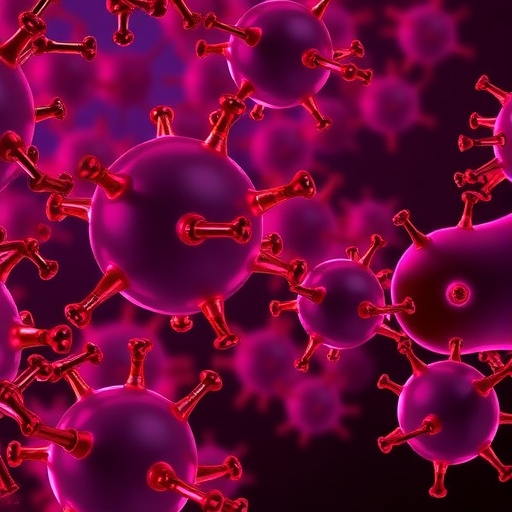Recent research has illuminated a pressing health issue affecting young girls—vulvovaginitis—alongside the perplexing interplay it has with urinary frequency. In a groundbreaking study led by Chen et al., published in BMC Pediatrics, the team conducted a single-center retrospective investigation that sought to unravel the relationship between these two conditions in pediatric patients. The findings are not just significant for medical professionals but also resonate deeply with parents and guardians striving to understand the health implications for their children.
The investigation meticulously analyzed medical records from a variety of patients who presented with symptoms indicative of vulvovaginitis. The research team took great care to highlight the characteristics of these young patients, providing a clear context for the prevalence of urinary issues among those diagnosed with vulvovaginitis. This exploration is particularly critical given that urinary frequency issues can lead to cascading physiological and psychological effects in children, thereby warranting thorough examination.
Vulvovaginitis is an inflammation of the vulva and vagina, which can result from a multitude of causes such as infections, irritants, and even hormonal changes. The study hypothesized that increased urinary frequency could be a symptom correlated with infection or inflammation, making it a pertinent variable to measure alongside diagnoses of vulvovaginitis. The data collected contained invaluable insights into how common these intersections are and the implications for both diagnosis and treatment.
The research revealed that girls experiencing vulvovaginitis frequently reported changes in urinary habits. Increased urinary frequency, coupled with the discomfort associated with vulvovaginitis, raises concerns about quality of life and ongoing well-being. Understanding this connection is essential for healthcare providers aiming to deliver comprehensive care to their young patients. The statistics collected during the study illustrate not only the incidence rates but also the severity of symptoms experienced by these girls.
Moreover, the retrospective design of the study means that it harnessed existing data, allowing for a more extensive analysis over a broader population. Such an approach elevates the findings beyond anecdotal evidence, presenting a clearer, more statistical understanding of how common these overlapping conditions are. Before this study, there was a significant gap in the literature concerning the direct relationship between urinary frequency and vulvovaginitis, particularly in younger populations.
Another critical aspect of this research is its implications for treatment methodologies. If frequent urination serves as a symptom of underlying vulvovaginitis, then medical practitioners can enhance their diagnostic pathways. This could lead to more tailored treatment plans that specifically address the dual challenges of urinary symptoms and vulvovaginitis. As pediatric care shifts toward a more holistic approach, such findings are crucial.
The implications of these findings extend beyond clinical settings. Parents and guardians will benefit from increased awareness of the signs and symptoms of vulvovaginitis and its potential association with urinary frequency. Empowering families with knowledge helps in early recognition of conditions, facilitating prompt medical consultations and timely interventions that can mitigate discomfort and potential complications.
As healthcare systems increasingly focus on child health, understanding the interconnections between various pediatric conditions will become essential. This study serves as a clarion call for more comprehensive pediatric health research, urging medical institutions to prioritize investigations that consider multifaceted connections between symptoms often treated in isolation.
The authors of the study also underscored the need for future research to expand upon their findings. Longitudinal studies could reveal further insights into the development of vulvovaginitis associated with urinary frequency over time. Such research could also help delineate causative factors contributing to these symptoms and allow medical professionals to better predict outcomes for their patients.
In terms of clinical applications, this study advocates for healthcare providers to incorporate urinary frequency inquiries into assessments of girls presenting with vulvovaginitis. Standardizing this practice could lead to earlier interventions and comprehensive care that address both urinary and gynecological health concerns simultaneously, improving overall patient outcomes.
In conclusion, the research conducted by Chen et al. is a transformative step toward better understanding the often-overlooked aspects of pediatric health. By shedding light on the connection between urinary frequency and vulvovaginitis in girls, this study not only enriches the existing literature but also serves as a resource for improving clinical practices. The hope is that this newfound understanding will pave the way for heightened awareness among healthcare providers and parents alike, ultimately leading to healthier outcomes for children everywhere.
In the rapidly evolving landscape of medical research, studies like this play a vital role in bridging gaps in knowledge while simultaneously highlighting the importance of holistic approaches to child health. As further investigations are conducted in the wake of this study, the ultimate aim remains clear: to empower healthcare professionals with the tools they need to provide exemplary care and to bolster the health of future generations of young girls.
Subject of Research: The relationship between urinary frequency and vulvovaginitis in young girls.
Article Title: The relationship between urinary frequency and vulvovaginitis in girls: a single-center retrospective study.
Article References:
Chen, H., Cui, X., Chen, Z. et al. The relationship between urinary frequency and vulvovaginitis in girls: a single-center retrospective study.
BMC Pediatr 25, 860 (2025). https://doi.org/10.1186/s12887-025-06237-9
Image Credits: AI Generated
DOI:
Keywords: Vulvovaginitis, Urinary Frequency, Pediatrics, Children’s Health, Girls Health
Tags: BMC Pediatrics research findingscauses of vulvovaginitis in childrenimplications for parents and guardiansinflammation of vulva and vaginamedical research on vulvovaginitispediatric health implicationspsychological effects of urinary frequencyrelationship between urinary issues and vulvovaginitisretrospective study on pediatric patientsurinary frequency in pediatric patientsurinary symptoms in young girlsvulvovaginitis in girls





